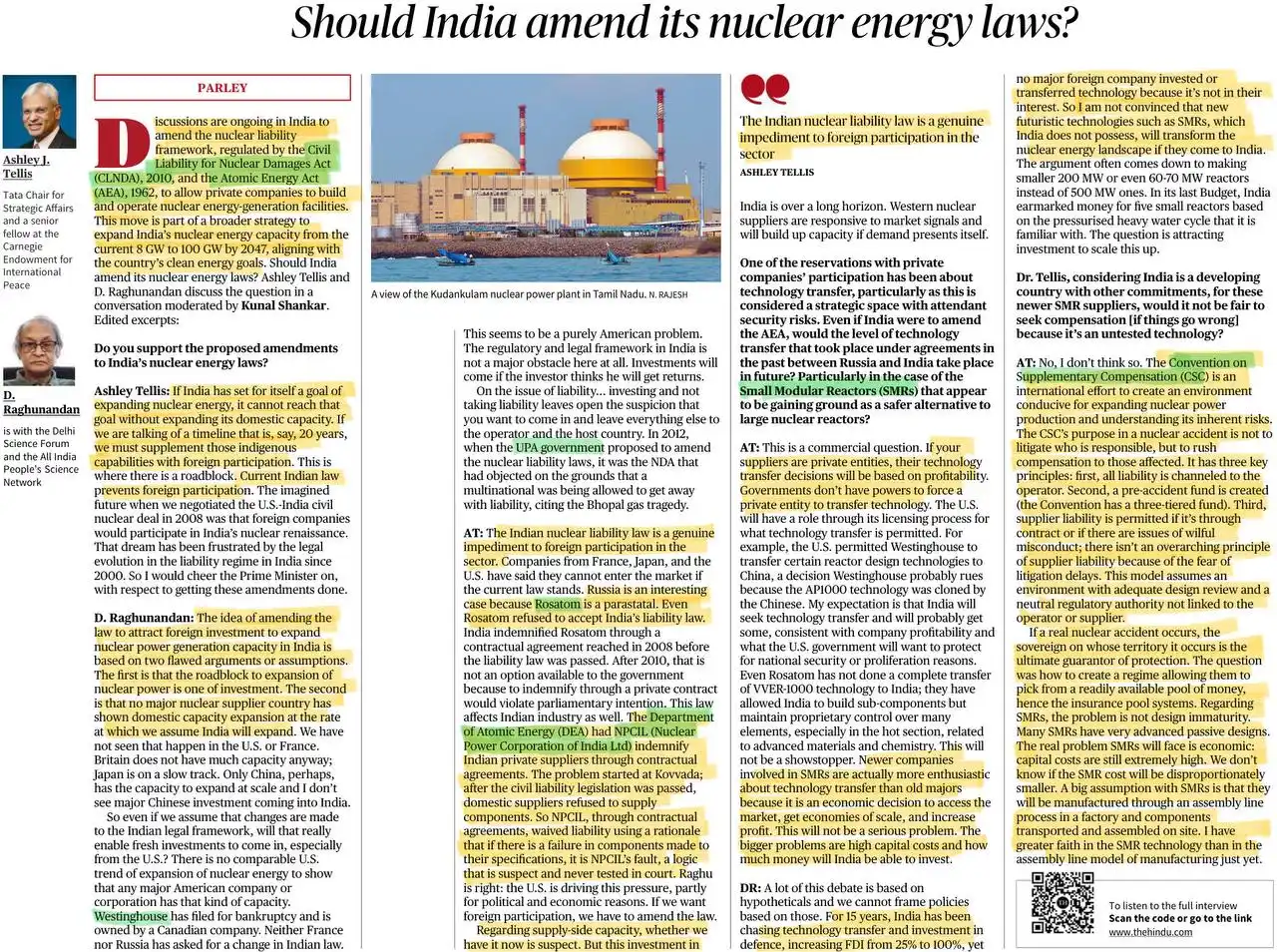
UPSC Science Technology UPSC UPSC UPSC UPSC Upsc Upsc Upsc Upsc UPSC BPSC MPPSC UPPSC CAPF CDS NDA™
June 6, 2025 at 03:52 PM
🔆 Key Takeaways: Debate on India’s Nuclear Liability Framework
📍 Context of the Debate
✅ Discussions are ongoing to amend India’s nuclear liability framework, mainly governed by the Civil Liability for Nuclear Damage Act (CLNDA), 2010 and the Atomic Energy Act (AEA), 1962.
✅ The aim is to boost nuclear energy capacity from 8 GW to 100 GW by 2047 as part of India’s clean energy ambitions.
📍 Need for Amendments
✅ Ashley Tellis argues that India cannot meet its nuclear energy goals without foreign collaboration, which is hindered by current liability laws.
✅ D. Raghunandan highlights two flawed assumptions: the roadblock to nuclear power expansion is investment and no major nuclear supplier has shown the ability to expand capacity at the pace India aims for.
📍 Legal and Investment Hurdles
✅ The Indian nuclear liability law is a genuine impediment to foreign participation.
✅ NPCIL waived liability in contractual agreements, but the logic of this approach remains untested in court.
✅ Rosatom also refused partic
